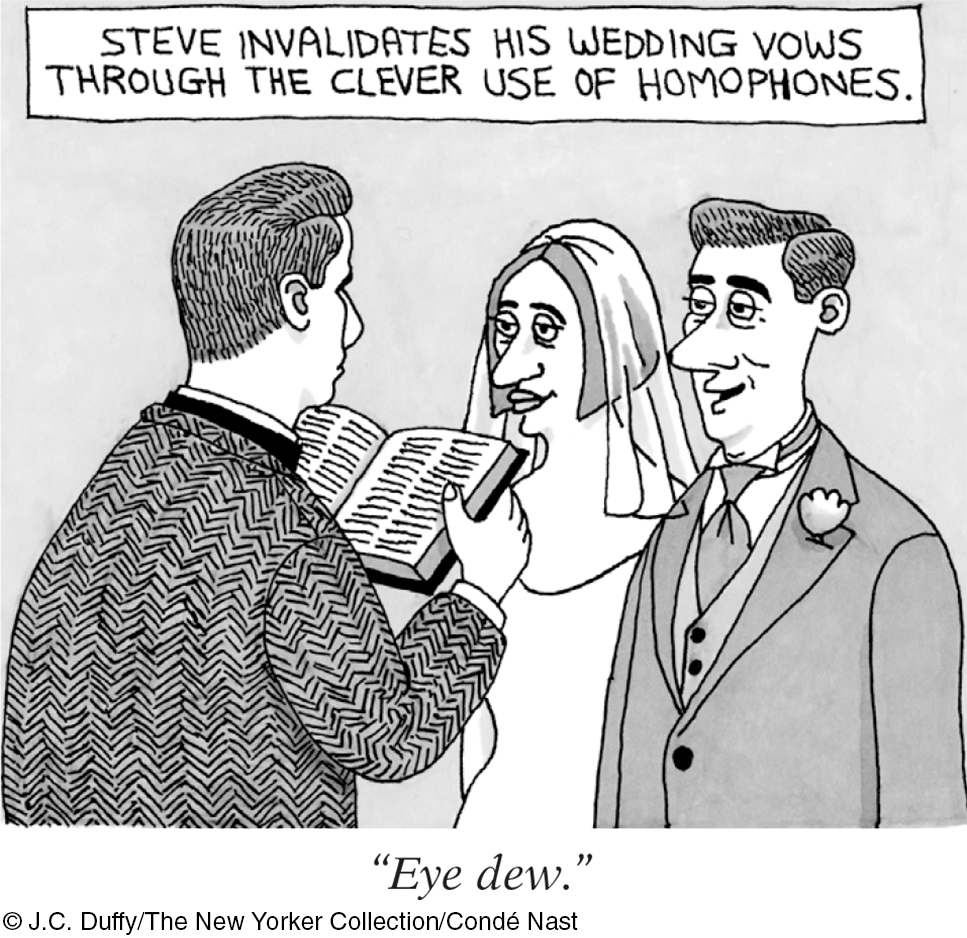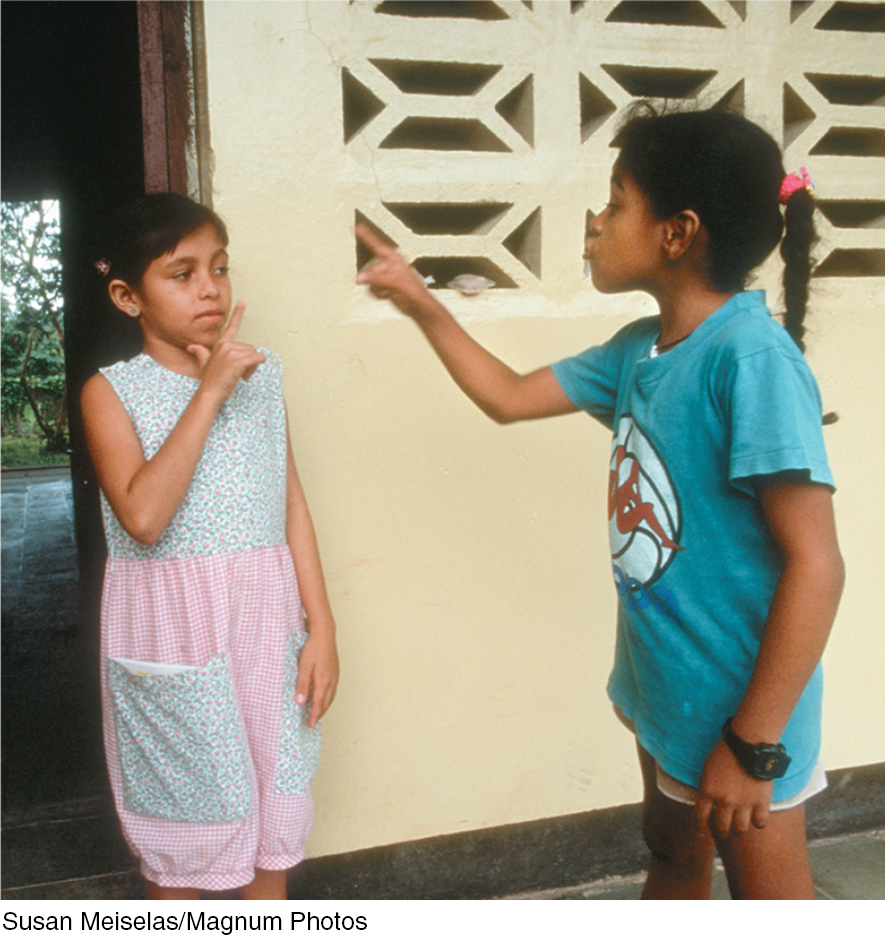26.1 Language Structure
26-
Consider how we might go about inventing a language. For a spoken language, we would need three building blocks:
phoneme in a language, the smallest distinctive sound unit.
morpheme in a language, the smallest unit that carries meaning; may be a word or a part of a word (such as a prefix).
grammar in a language, a system of rules that enables us to communicate with and understand others. In a given language, semantics is the set of rules for deriving meaning from sounds, and syntax is the set of rules for combining words into grammatically sensible sentences.

Phonemes are the smallest distinctive sound units in a language. To say bat, English speakers utter the phonemes b, a, and t. (Phonemes aren’t the same as letters. That also has three phonemes—
th, a, and t.) English uses about 40; other languages use anywhere from half to more than twice that many. As a general rule, consonant phonemes carry more information than do vowel phonemes. The treth ef thes stetement shed be evedent frem thes bref demenstretien. Morphemes are the smallest language units that carry meaning. Most morphemes combine two or more phonemes. Some are words, while others are parts of words. The word “readers,” for example, contains three morphemes: “read,” “er” (signaling that we mean “one who reads”), and “s” (signaling that we mean not one, but multiple readers). Every word in a language contains one or more morphemes.
Grammar is the system of rules that enables us to communicate—
by deriving meaning from sounds (semantics) and ordering words into sentences (syntax).

Like life constructed from the genetic code’s simple alphabet, language is complexity built of simplicity. In English, for example, 40 or so phonemes can be combined to form more than 100,000 morphemes, which alone or in combination produce the 616,500 word forms in the Oxford English Dictionary. Using those words, we can then create an infinite number of sentences, most of which (like this one) are original.
Linguist Noam Chomsky has argued that all languages share some basic elements, which he calls universal grammar. All human languages, for example, have nouns, verbs, and adjectives as grammatical building blocks. From infancy onward, humans, no matter their language, prefer some syllables, such as blif, over others, such as lbif (Gómez et al., 2014). Nevertheless, the world’s 6000+ languages are structurally very diverse (Evans & Levinson, 2009)—much more diverse than the universal grammar idea implies (Bergen, 2014; Ibbotson, 2012). Behaviorist B. F. Skinner (1957) believed we can explain this diversity with familiar learning principles, such as association (of the sights of things with the sounds of words); imitation (of the words and syntax modeled by others); and reinforcement (with smiles and hugs when the child says something right).
Chomsky also argued that humans are born with a built-
RETRIEVE IT
Question
How many morphemes are in the word cats? How many phonemes?